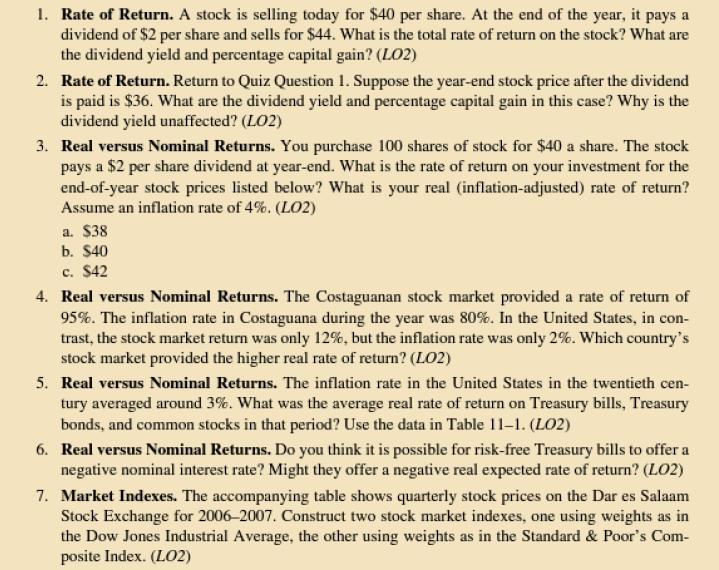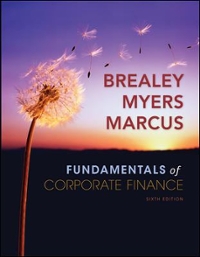Question:
4. Distinguish between unique risk, which can be diversified away, and market risk, which cannot.

Transcribed Image Text:
1. Rate of Return. A stock is selling today for $40 per share. At the end of the year, it pays a dividend of $2 per share and sells for $44. What is the total rate of return on the stock? What are the dividend yield and percentage capital gain? (LO2) 2. Rate of Return. Return to Quiz Question 1. Suppose the year-end stock price after the dividend is paid is $36. What are the dividend yield and percentage capital gain in this case? Why is the dividend yield unaffected? (LO2) 3. Real versus Nominal Returns. You purchase 100 shares of stock for $40 a share. The stock pays a $2 per share dividend at year-end. What is the rate of return on your investment for the end-of-year stock prices listed below? What is your real (inflation-adjusted) rate of return? Assume an inflation rate of 4%. (LO2) a. $38 b. $40 c. $42 4. Real versus Nominal Returns. The Costaguanan stock market provided a rate of return of 95%. The inflation rate in Costaguana during the year was 80%. In the United States, in con- trast, the stock market return was only 12%, but the inflation rate was only 2%. Which country's stock market provided the higher real rate of return? (LO2) 5. Real versus Nominal Returns. The inflation rate in the United States in the twentieth cen- tury averaged around 3%. What was the average real rate of return on Treasury bills, Treasury bonds, and common stocks in that period? Use the data in Table 11-1. (LO2) 6. Real versus Nominal Returns. Do you think it is possible for risk-free Treasury bills to offer a negative nominal interest rate? Might they offer a negative real expected rate of return? (LO2) 7. Market Indexes. The accompanying table shows quarterly stock prices on the Dar es Salaam Stock Exchange for 2006-2007. Construct two stock market indexes, one using weights as in the Dow Jones Industrial Average, the other using weights as in the Standard & Poor's Com- posite Index. (LO2)








